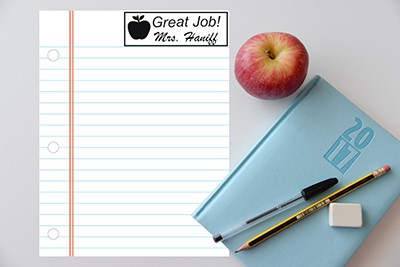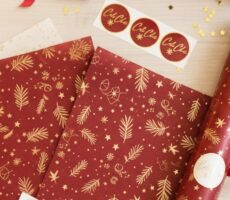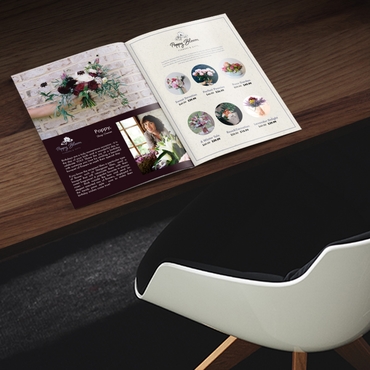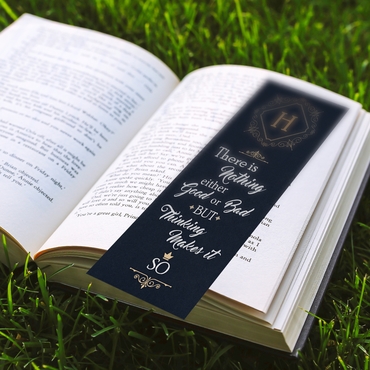Back-to-school has changed dramatically over the last 70+ years, from uniforms and book belts in the 1950s to hybrid classrooms, AI study tools, and digital-first learning in 2025.
While fashion and classroom technology evolved decade by decade, one thing stayed constant: schools, parents, and communities still rely on clear communication, organization, and printed materials to support students.
This guide breaks down how school fashion, learning tools, and classroom technology evolved from the 1950s to today and what schools, PTAs, and local businesses should prepare and print for a modern school year.
If you’re planning ahead for the school year, seasonal timing matters. Our 2025 Print Campaigns: Engage & Grow Your Brand Monthly shows what to print throughout the year to stay visible without last-minute stress.
1950’s: Uniforms, Book Belts & Film Projectors
We start way back with the 1950’s, when the average teacher’s salary was a meager $4k a year, the average number of days kids attended school measured roughly just 150 days and most kids wore uniforms to school. Boys wore button down shirts, slacks and often times neckties with older kids wearing blazers or cardigans. Girls were made to wear skirts, often plaid or dotted, button down shirts and often sweaters. Days kicked off at 7:30am and the bell didn’t ring until 4:30pm. While children on average see 25 to 30 more school days today than back then, the longer school days during the 50’s meant ultimately that kids who grew up in the 1950s attended a longer school year.
The 50’s brought a fundamental change to education in America as classroom curriculum was altered to add increased emphasize on mental, emotional and physical development. Schools included new courses including vocational training, specialized courses focusing on modern photography, lab work and home economics. Blackboards, ditto machine handouts, textbooks and film-strip projectors were the most common classroom methods of teaching in the 50s. Most kids were familiar with frequent burn spots from projectors eating film-strip and one was lucky if a text book didn’t have important pages torn out and answers written (often incorrectly) in the margins of pages. Kids carried around their books using book belts that were essentially belts you would wear around your waist, fastened around textbooks, allowing children to carry all their books using handy straps.
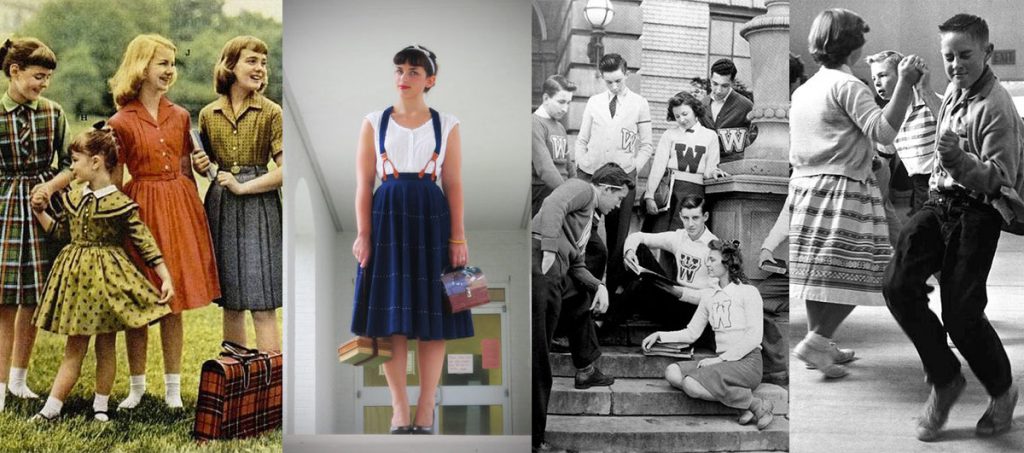
What changed
-
Strict dress codes and formal school attire
-
Long school days with fewer total school days per year
-
Learning tools centered on blackboards, textbooks, ditto machines, and film-strip projectors
Why it matters
-
Education emphasized structure and discipline
-
Printed materials were essential, limited, and reused extensively
1960’s: Cultural Shifts, Conservative Classrooms
The 60’s saw a true revolution in style, culture and everything associated. Many young Americans ditched the button down, plaid look in favor of ‘British Invasion’ inspired fashion that included bright colors, shorter skirts, ‘hip huggers’, capri pants, big belts and head bands. Much of the then newer fads in fashion however didn’t filter into schools. Most schools continued to employ strict dress codes. Boys commonly worse dress trousers or slacks, dress shoes and buttoned down shirts. Haircuts were conservative with most schools banning the more popular young adult styles of the day like pig tails, bowl or ‘Beatle’ cuts, Mohawks or Afros.
School kids in the 60’s typically carried with them tin lunch boxes, a handy slide-rule and carried their school text books, bound together using the familiar book belts. More experimental forms of teaching made its way into schools in the 60’s with many teachers employing the use of speed-reading and grading systems not purely reliant on standardized ‘A through F’ alphabet grades. Kids were still getting warm, daily print outs from school ditto machines and teachers were still giving instructions using blackboards and film-strip projectors.
What changed
-
Youth fashion exploded outside school, but dress codes remained strict
-
Early experimentation with grading systems and reading techniques
-
Continued reliance on printed worksheets, blackboards, and projectors
Why it matters
-
Schools resisted rapid cultural change
-
Print remained the primary method for instruction and communication
1970’s: Relaxed Dress Codes & Classroom Modernization
Towards the end of the 1960’s schools across the nation were desegregated. Along with that change came a more openness for school dress, as many schools reduced or outright eliminated school dress codes. As a child of the 70’s and 80’s, I was far too familiar with going back-to-school. I remember clearly the autumn trips to Sears to purchase corduroys, striped t-shirts and tennis shoes. My Mom would put kool-aid in my thermos, peanut and jelly sandwiches and Little Debbie Star Crunch bars in my Buck Rogers lunch box. I would change out of my Underoos and into school clothes, then my Mom would send me on my way to the bus stop to wait for a ride to school.
Technology advanced sufficiently enough from the previous decade to make the 70’s class room experience different from previous decades. Overhead projectors were more common in the 1970’s though most school classrooms still had film-strip projectors. Gone were slide-rules, replaced by pocket calculators and even calculator watches, though those were a rarity. Book belts were now replaced by book bags and back packs and for the first time many girls came to school wearing make-up.
Grade school, middle school and high school girls started wearing mini-skirts around the mid 70’s. Tennis shoes were becoming popular with kids of varying ages and more girls were allowed to get away with wearing earrings. Longer hair for boys was more tolerated and eventually became ‘the’ hair style of the decade. Kids wearing bell bottoms could be found in every classroom as could kids wearing tight fitting t-shirts with pop culture references splashed across the front or back. Denim was more widely accepted in the decade and it was often considered trendy to wear at least one article of western wear, be it a cowboy hat, large belt buckle or cowboy boots. Many young girls wore cowl neck sweaters in a varying array of colors and texture and the 70’s wouldn’t truly have been the 70’s without elongated collars on shirts.
What changed
-
Desegregation and relaxed dress standards
-
Backpacks replaced book belts
-
Overhead projectors and pocket calculators became common
Why it matters
-
Schools became more flexible and expressive
-
Printed schedules, assignments, and visual materials increased
1980’s: The First Classroom Tech Boom
The 80’s are well known for technological advancements and infrastructure changes in schools. The 80’s is the decade when learning devices became sophisticated and small enough to make their way into classrooms. Calculators, Speak N Spells, math keyboards, listening devices using tapes all became cheap and popular. Companies started catering to children more; creating unique and popular tools and toys, specifically designed to be used in classrooms and at home by kids. Gone from classrooms were film-strip projectors and the slide-rule. Instead, just about every classroom now had a large TV (21 inch was considered large at the time) where teachers would “pop-in” VHS tapes for the class to watch. Important tests were given with score cards where kids had to pencil in their choice (usually A, B, C or D) and each card would then be read by computers and graded quickly and easily.
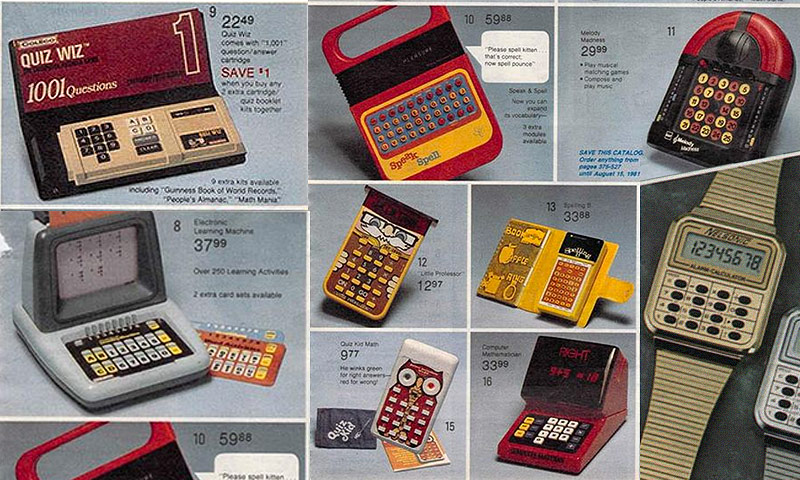
During the 80’s kids could choose from dozens of different designs of backpacks, new Trapper Keepers, colored and scented papers, scented stickers and markers, colored pens and pencils, pencil grips, eraser caps, scissors, jelly bracelets, clips, charms, watches/swatches, rulers, thumb tacks, rubber bands, pencil sharpeners and much…all available in a varied array of shapes, sizes and colors. The 80’s was about product diversity and kids were able to display their originality and diversity with their school supplies, clothes and overall style.
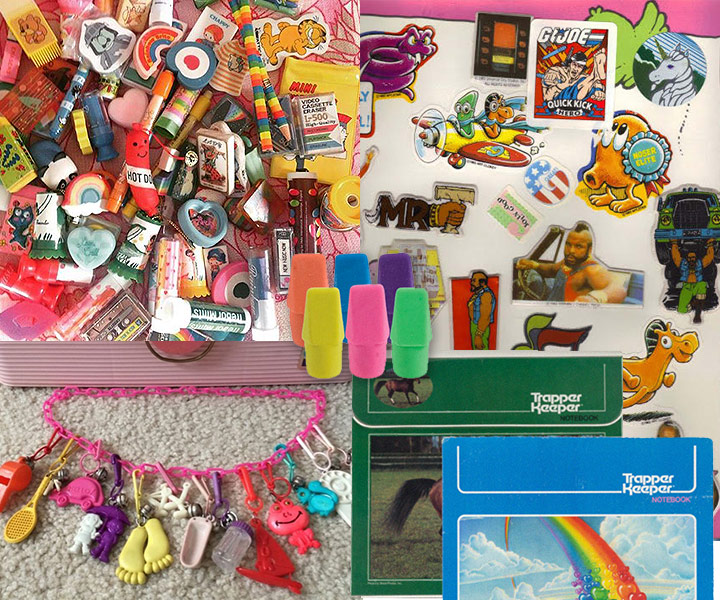
A large array of highly stylized, trendy clothing could be seen in schools as kids migrated away from the styles of the 60’s and 70’s. The 80’s fashion included customized sneakers from Reebok, Converse, Nike and L.A. Gear. Fashion for kids was filled with multi-colored clothing filled with not just pop-culture references and popular sayings but also abstract designs, highlighting bold colors, neon or animal patterns and pants with stirrups. Denim was big for both girls and boys. Children could be seen adorning ‘tie-die’ patterns while others wore anything from pastel colored pants with collared shirts and bulky sweater to ‘sweats’ featuring headbands, long sleeved shirts worn with one shoulder showing, multi-colored or neon leggings. Hair was big, bold and adventurous with both boys and girls adorning interesting colors, shapes and lengths.
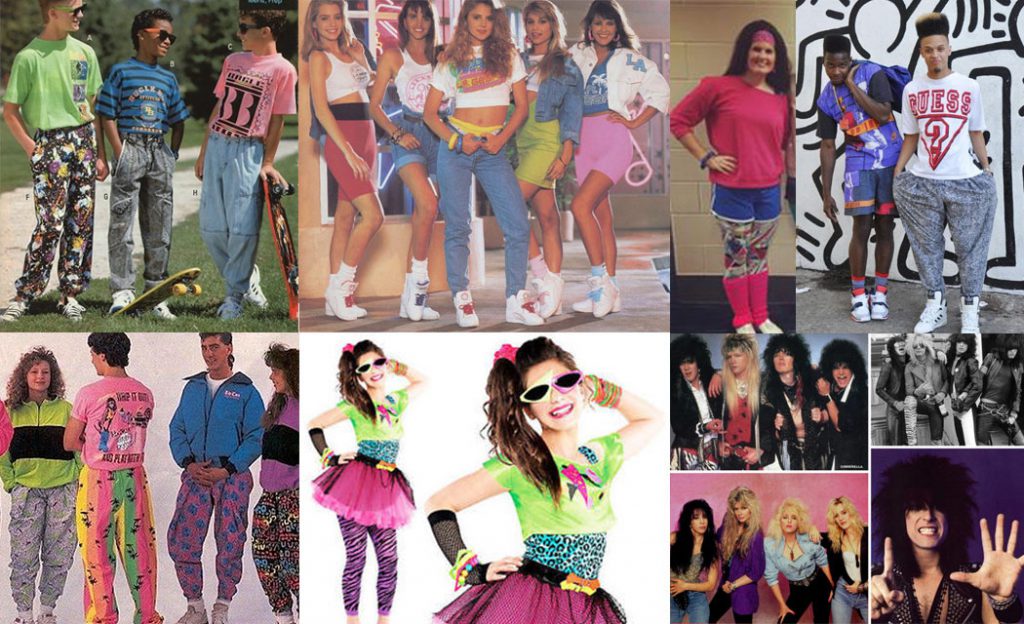
An 80’s style homage would not be complete without mentioning those designs worn by popular artists like Madonna, Michael Jackson, Cindy Lauper and bands like Poison, Guns N’ Roses, Quiet Riot, Van Halen and Motley Crue. Fashion trends from these and other popular artists could be found in virtually every classroom. The 80’s were truly a unique era of trends and fashion which offered unparalleled styling options for kids in school. The decade represented the first time in American history where individualism was truly possible; allowing kids to choose from an unprecedented array of styling choices and where styling terms like ‘accessorize’, ‘glam’, ‘new wave’, ‘fresh’ and ‘yuppie’ became popular and characteristic of the styles kids were wearing in class.
What changed
-
Calculators, VHS players, scan-graded tests, and early learning devices
-
Explosion of colorful school supplies and personal expression
-
Television-based instruction became standard
Why it matters
-
Students interacted with multiple teaching formats
-
Print expanded into planners, folders, worksheets, and classroom visuals
1990’s: Computers, Internet & Transitional Learning
Much of the style available in the 80’s didn’t carry over to the 90’s. Much like the 70’s, many of the styling trends of the 80’s were fads and died out early. Grunge had made its way into pop culture and on to the radio airwaves as much of the style of older kids in the early 90’s was comprised of clothing fitting the movement. Many boys wore white or dark colored t-shirts, often with band names or obscure references on them, long flannel dress shirts that remained unbuttoned and either worn or tied around the waist, loose fitting blue jeans often with holes on or around the knees and brown or dark leather boots, typically worn by construction workers. Girls wore jean jackets, t-shirts with a long-sleeved shirt tied around their waist and low top tennis shoes. Wearing flannel shirts with tees and short denim shorts with solid colored leggings underneath was also considered stylish.
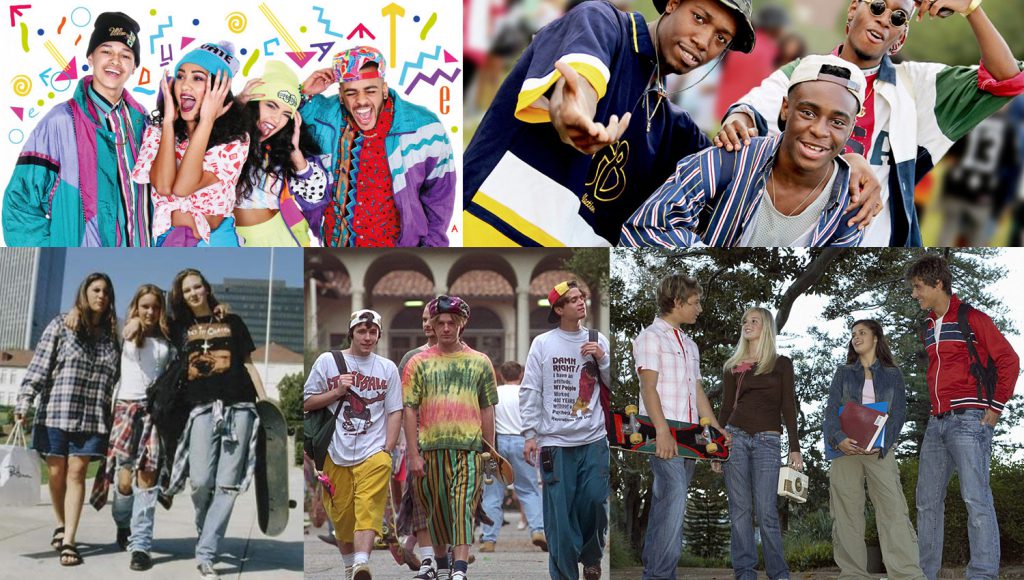
Brands like Tommy Hilfiger, SoCal Surfwear, Wet Seal, Urban Outfitters, Contempo Casuals, and Bongo Jeans were popular and colorful combos were nearly as popular as they were in the late 80’s. An average girl’s jeans came up to the navel and virtually all jeans were rolled up to some degree at the bottom.
Hip-hop had matured in the 90’s with more kids turning to hip-hop fashion for school. For a while over-sized jeans were worn backwards ala Kriss Kros style, the early 90’s young hip hop duo. Many kids wore multi-colored. Over-sized athletic jackets and pants, featuring a diverse array of designs and brightly colored caps with the bill turned upwards. Still other kids, fans of the new genre called EDM or ‘electronic dance music’ dressed in oversized, large bell-bottom jeans, and t-shirts. Younger kids would deck out in t-shirts and jean overalls, wear over-sized cargo pants that tapered at the bottom. Much of kids clothes during the 90’s was over-sized, featured multiple patterns, colors and overall comprised of numerous styles.
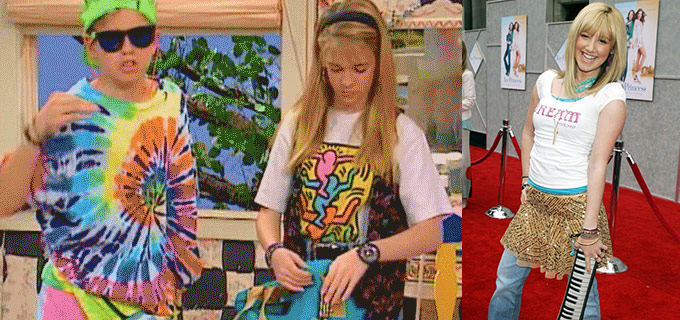
The classroom of the 90’s continued the trend of looking different from previous decades. With the 90’s came the internet and a very big change for many classrooms: a move away from traditional learning methods towards distributed learning via computers. Most schools now had computer labs or classrooms with modern computers. Class curriculum now included courses in computers and teachers now gave homework assignments where students had to go on the internet to look up information, instead of the traditional Encyclopedia. Jansport backpacks were popular as were day planners and dark colored makeup for girls. Graphing calculators were big (and expensive) and just about every kid had one in their back pack or desk. Cellular phones started to become more popular during the 90’s as did personal pagers and for the first time teachers had to walk around their classes demanding kids either turn over their personal electronic devices or turn them off and put away.
Jelly Roll pens were all the rage in classrooms as were highly stylized pens and pencils in general. Troll toppers, chunky shoes and hair streaking were all the rage as well. The 90’s were a high point for accessories, where boys and girls would wear rings, earrings and necklaces of all materials, sizes, shapes and designs. Teachers still overwhelmingly used the blackboard (or the newer trend of whiteboards) and kids were still primarily handing in their tests and homework reports in hand written print or cursive. VHS tapes were replaced with CDs and instead of small TVs and VHS players, teachers used overhead projectors that displayed images and video from computers onto white screens or walls. All in all the 90’s represented the last decade where students copied information and assignments down on paper, used CDs or floppy discs. The 90’s was a time where getting online was a process that involved ‘dialing in’ and a time where phones lacked any semblance of social media correspondence. They were the last decade kids actually called their classmates and friends on the phone and the last era when phone numbers were actually committed to memory. The 90’s were also the last decade where music was listened to and recorded from the radio or music stores.
What changed
-
Computer labs and early internet research
-
Graphing calculators and digital coursework
-
Continued reliance on handwritten notes and printed tests
Why it matters
-
Schools balanced digital access with traditional print
-
Paper handouts, planners, and assignments remained critical
2000’s: Digital Devices Enter the Backpack
The 2000’s were the decade of boy bands, Britney Spears, Christina Aguilera, Eminem, Jay-Z and Kanye. It was a decade of messenger hats and bags and most kids in middle to high school were heading to Abercrombie & Fitch to outfit their wardrobe for the new school year. The 2000’s were the decade teachers had to deal with constant distracting sounds from kids’ phones and kids stopped passing written notes to classmates and started sending IMs, photos and even videos. Teachers traded confiscating tape players and pocket radios to confiscating Apple iPods. Kids still used textbooks to study and folders, binders and appointment keepers for taking notes but the 00’s brought with it backpacks that now included (at the time) state of the art 13″ and 15″ inch laptops. During the 2000’s computer labs could be found in virtually every school across the US and many schools were dedicating funds to outfit libraries, labs, study halls and class rooms with Dell and HP personal computers for students to use.
The average preteen and teen on their way to school carried graffiti themed backpacks or designer bags (if they were girls) filled with push-a-point pencils and reading material adorned in book ‘sox’. Razr phones were the preferred communication device of the day with many adorned with rhinestones and sequins, a process affectionately referred to as “bedazzling”. Younger children were coming to school with their lunch pails filled with old favorites like Lunchables, Jello-O and boxes of Hi-C but the 2000’s were unique because most schools now had for sell in cafeterias fast food, the very same high-caloric, high-fat menu items typically for sell at McDonald’s, Taco Bell and Pizza Hut. Vending machines throughout the halls offered Coke and Pepsi products for sell and the average school kid’s weight was up significantly versus previous decades.
School kids during the 2000’s seemed to be more fashion conscious and more aware of what was trending and in-style compared to previous decades. Many kids were adorned in high-end, designer clothes & accessories with luxury fashion brands like Victoria Secrets, Gucci, Fendi, Armani, FUBU, and Versace logos seemingly everywhere. Girls looking to be ‘trendy’ at the time wore Juicy Couture tracksuits or accessorized with low-rise, boot cut jeans, gaucho pants with belt scarves and embroidered peasant tops, Shrugs, camisoles, crop tops, stretchy shirts or cardigans, adorned with tattoo choker necklaces, Baby-G watches and body glitter. Guys picked from an array of styles popular at the time including tees with graffiti or airbrushed designs, Hollister polos with the collar turned up, Abercrombie & Fitch athletic shirts, Ed Hardy shirts and turtlenecks up top and skinny jeans. Popular also were Diesel distressed jeans, over-sized cargo shorts or nylon gym pants and flip flops, Heelys or brand name sneakers on the feet.
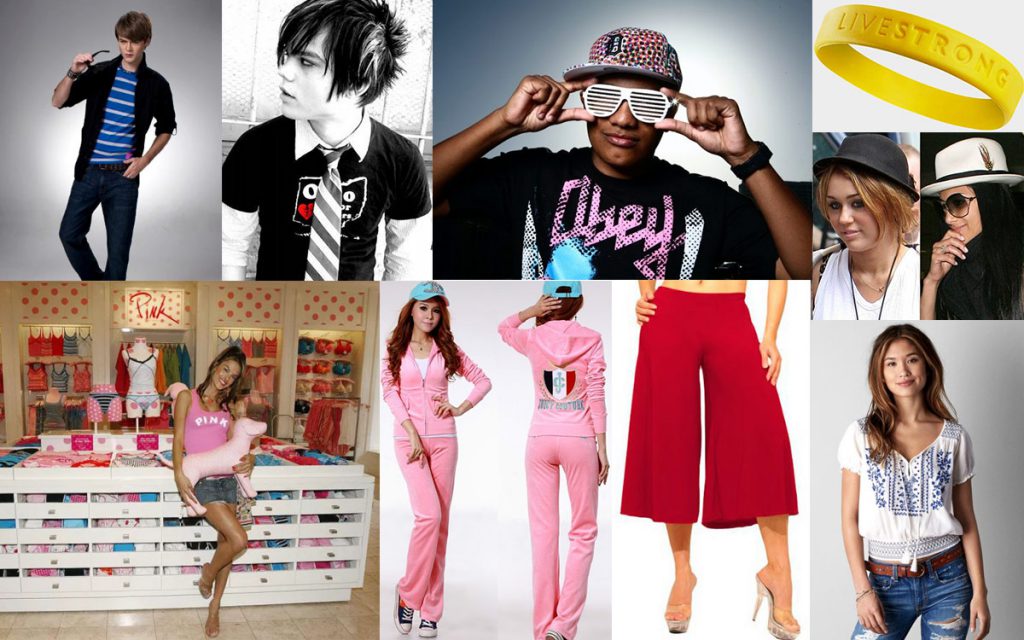
While the average kid didn’t accessorize quite as completely as kids of the 80’s or 90’s, many girls did wear items like MAC Lipglass, bandanas, tattoo chokers, body glitter, fake tans and fedoras that partially covered multi-highlighted hair. Boys trends included spiky hair with blonde highlights or frosted tips or ‘Bieber’ haircuts, Livestrong bracelets, Axe Body Spray, Shutter shades, or caps with flat bills worn just off the top of the head. Emo was also a big trend of the 2000’s and included knit caps, flannel, distressed, skinny jeans, spiked accessories and old school Converse sneakers. Both sexes wore dark eye makeup and grew their hair out so it covered their ears and eyes.
The 2000’s were also the beginning of the ‘selfie’. Digital cameras were becoming extremely advanced and sophisticated but also incredibly cheap and it was likely that more kids in any classroom had a digital camera with them than there were kids without. The last decade saw the birth and rise of the ‘duck face’ and ‘peace sign’. Personal interaction was replaced with kids taking pictures of themselves, their meals, friends and family and using instant messenger services like AIM to send photo creations to other classmates.
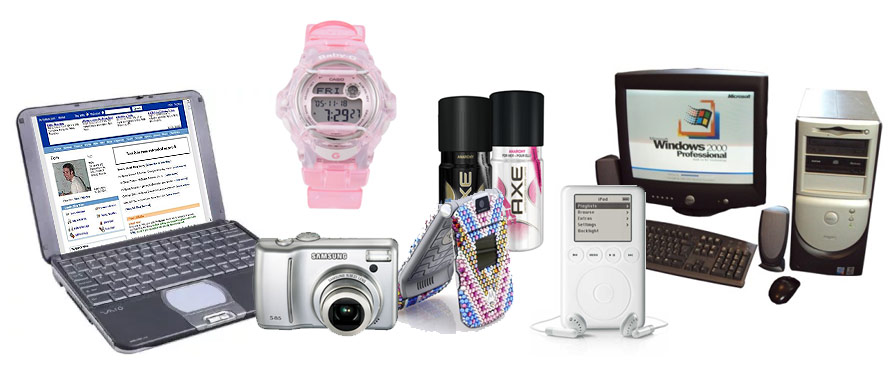
Today: Back 2 School Preparation
Today we have modern advances and persistent access to virtually any kind of information available at our fingertips. Ever present is all the information parents need to prepare their children for the 2018 school year. Here’s a handy list of items to purchase, things to do and how to prepare for the year ahead:
Many school systems in States across the US have moved back to a unified dress code in order to quill verbal and physical abuse in schools. If you are taking your child to a new school be sure to contact the school administration office and get the dress requirements and any other restrictions necessary for attending class for the upcoming school year. We would recommend contacting the school roughly a month before classes start to get information. You can also use this as an opportunity to check to make sure your child is registered properly, to square away any information the school might need, to get school calendar and event information and to grab a copy of the items and supplies your child will need to bring to class.
- Make sure to consider the following list of school related items is ready:
- Contact information for you, closest relatives, fire and police departments
-
Confirm dress code & supply lists; communicate early with a printable one-pager (Flyers).
-
Post clear signage for hours, events, and traffic flow (Posters).
-
Promote clubs, tutoring, and sports with Rack Cards and Brochures.
-
Add Bookmarks to library programs and reading challenges.
-
Keep staff stocked with Letterhead, Envelopes, and Self-Inking Stamps.
Technology has advanced sufficiently enough to make today’s school truly a ‘school of the future’. Many schools have eliminated the need for textbooks altogether, opting instead for tests, assignments, quizzes and even grade reports to be administered and recorded using computers. Kids now have school accounts where students and parents can get assignment information (days missed due to sickness or snow are no longer excuses). Students can use the internet to register for classes, sign up for school trips, stay up to date on the latest school related activities and even add money to and pay for school related activities and even lunches. Parents also benefit significantly by being able to see their child’s daily work assignments and even keep track of performance and test results. Many schools even have the ability for parents to track and make sure their children have been to every class or get notifications when their child has been dropped off at the bus stop near their home.
Today, every child has an entire world of information at their disposal, both in and out of the classroom. Today’s technology means that virtually every school aged child has the ability to look up and find anything they need for school work assignments. The far majority of children today all have smart phones with built-in text messaging, internet, sophisticated cameras, editing software, games and even the ability to search for just about anything. Parents today have the ability to track and monitor nearly every facet of their child’s daily school and study experience (much to the children’s chagrin). Just about every aspect of a child’s education can be setup, run and monitored all from a computer monitor, usually without the need to ever pick up a phone or talk to anyone in person.
Kids today are more prolific spellers, better at typing and typically better at reading comprehension than kids from previous decades. The kids of future decades will most likely continue to benefit from technological change and the average classroom will likely also continue to evolve.
To shop for your back-to-school items, visit overnightprints.com
Related Articles
BACK TO SCHOOL IDEAS
BACK TO SCHOOL: 10 MAJOR LIFE HACKS FOR DIY CLASSROOM DÉCOR
FAQ
Q1. When do schools usually print back-to-school materials?
Most start 3–6 weeks before the first day. If you’re late, prioritize Flyers for fast announcements and Posters for visibility.
Q2. What are the most cost-effective prints for school events?
Flyers for handouts, Rack Cards for info takeaways, and Stickers for engagement.
Q3. How can small businesses tie into back-to-school?
Offer welcome discounts on Postcards, hang window Posters, and include Bookmarks as freebies for families.
Q4. What’s a simple print bundle for PTAs or clubs?
One Poster + 100 Flyers + 250 Stickers covers promotion, handouts, and rewards.
Q5. Do I need folders?
For orientations and open houses, Presentation Folders keep schedules, maps, and contacts tidy.


